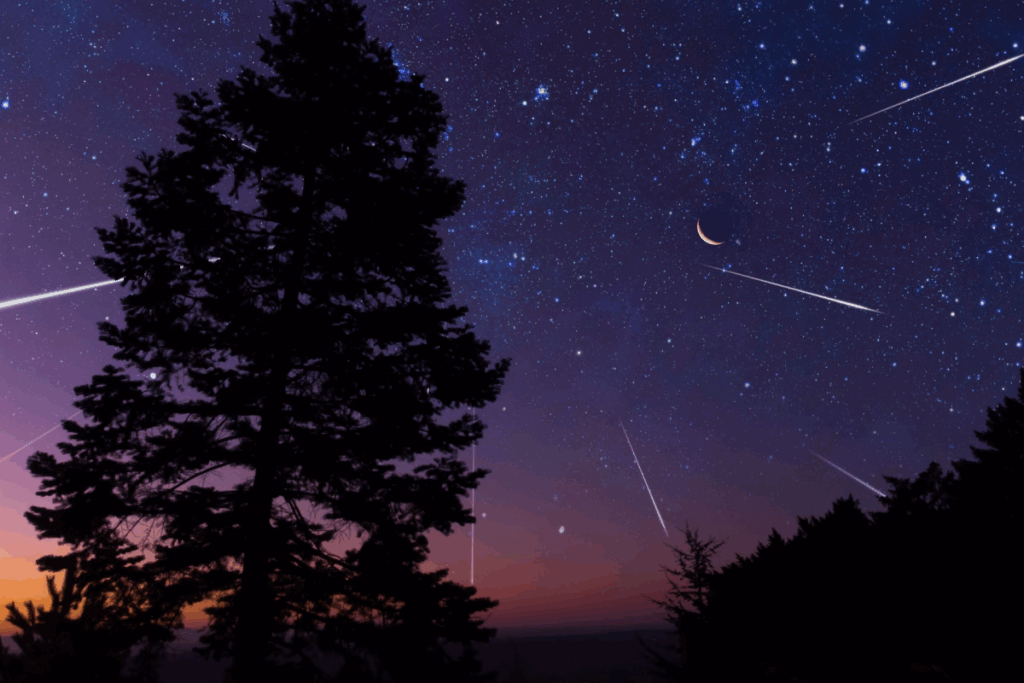Halley’s Comet Debris Fuels Spectacular Night Show
The night sky is ready to dazzle stargazers once again as the Orionid meteor shower reaches its annual peak between October 21 and 22. Known for its bright, fast streaks that seem to emerge from Orion’s Belt, the Orionids are among the most anticipated celestial displays of the year.
The event occurs when Earth passes through a trail of debris left by Halley’s Comet, the same cosmic source behind the Eta Aquarids in May. Tiny fragments of dust and rock collide with Earth’s atmosphere at incredible speeds, burning up in brilliant flashes visible to the naked eye.
According to the International Meteor Organization, the Orionids have been active since early October and will continue through November 7. This year’s peak coincides with a new moon, meaning darker skies and ideal viewing conditions for much of the planet.
Best Places and Times to Watch
The meteor shower will be visible from both hemispheres, but North American skywatchers could be especially lucky this year. Meteorologists expect clear conditions across a wide stretch of the central United States, including Nevada, Utah, Colorado, Kansas, Missouri, Oklahoma, Arkansas, and much of Texas.
“The central corridor looks to be the clearest,” said Brian Hurley of the National Weather Prediction Center. He added that most of the Southeast will also enjoy favorable viewing, though cloud cover may briefly affect the Gulf Coast.
However, some regions may face less-than-ideal weather. Increasing cloudiness is expected in parts of the West after midnight, especially over Arizona and southern California. The Great Lakes and much of the Northeast could experience heavier clouds due to a passing weather system, limiting visibility.
To maximize your chances, it’s best to step outside well after midnight and look toward the constellation Orion, where the meteors appear to radiate. Observers under dark, rural skies could see up to 20 meteors per hour at the shower’s peak.
The Science Behind the Streaks
Meteor showers like the Orionids occur when Earth’s orbit crosses a comet’s debris path. The particles, often no larger than grains of sand, enter the atmosphere at speeds of more than 40 miles per second. The friction from this rapid entry causes them to vaporize, producing glowing trails that can last for several seconds.
Because Halley’s Comet orbits the sun every 76 years, it leaves a recurring trail that Earth passes through twice annually — once in May and again in October. The Orionids are known for their particularly swift and bright meteors, which can sometimes leave glowing “trains” that linger for several seconds after the initial flash.
Other famous showers also result from similar cosmic interactions. The Perseids in August, for instance, are caused by debris from Comet Swift-Tuttle, while the Geminids in December come from an asteroid known as 3200 Phaethon.
How to Make the Most of the Show
To enjoy the Orionids, experts recommend heading far from city lights and allowing your eyes 15 to 20 minutes to adjust to the dark. No telescope or binoculars are needed — in fact, they can restrict your view.
“Just use your eyes and, ideally, find a dark sky,” advised Michelle Nichols, director of public observing at the Adler Planetarium in Chicago.
Dress warmly, bring a reclining chair or blanket, and be patient. The show is best viewed in wide, open areas where the horizon is clear. As long as skies cooperate, the Orionids promise a vivid reminder of Earth’s connection to the cosmos — and the spectacular debris trail of one of history’s most famous comets.


